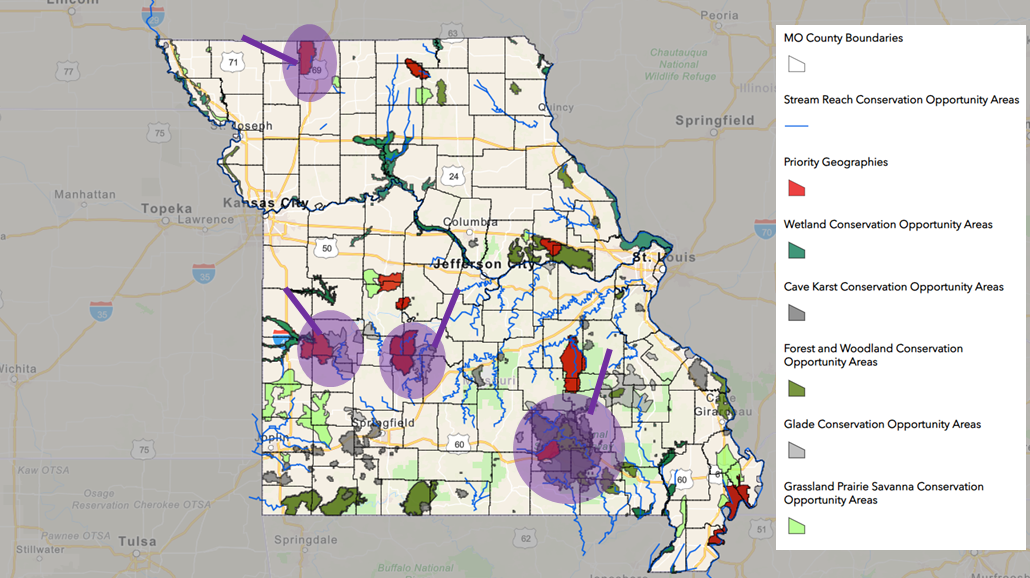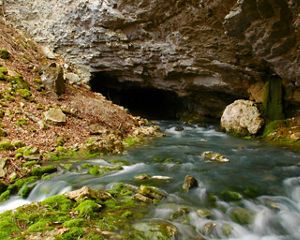2024 Year in Review
Take a look at the conservation highlights that made an impact in Missouri and beyond in 2024.
A livable climate, healthy communities and thriving nature: This is the One Future that The Nature Conservancy envisions. We will get there together, with the clear recognition we have years, not decades to act.
For nearly seven decades, TNC in Missouri has been part of the modern land trust community. As the challenges have evolved, so has our understanding of the urgent work required to address them. We have mapped out a path from TNC’s ambitious global goals for 2030 to the work we’re doing on the ground in Missouri. Our progress here supports our landscapes and communities while contributing to a worldwide effort that is fundamental to a future where people and nature thrive.
The past year has been packed full of projects and partnerships that carry us forward on that path. Here are just a handful of the highlights:
Centers for Conservation Innovation
The CCI program is one of TNC’s fastest growing in Missouri. Set in priority landscapes, the centers advance four pillars of conservation: research, training, stewardship and outreach.
In 2024, we saw rapid progress in planning and on-the-ground results, particularly at the Missouri River Center CCI. TNC has developed a 5-year plan for the site with our partners that includes a showcase for agroforestry. Incorporating trees and shrubs in agriculture offers multiple benefits for farmers and the larger ecosystem, including greater resiliency and diversified crops. In October, volunteers planted nearly 2,000 trees in the first of several plots that will demonstrate different options for planting configurations and species.
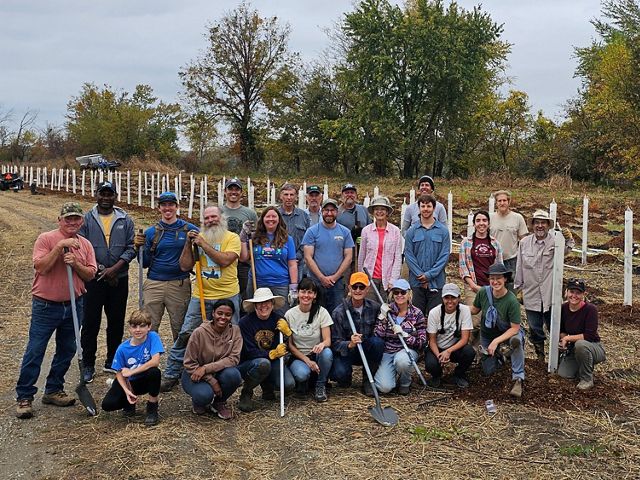
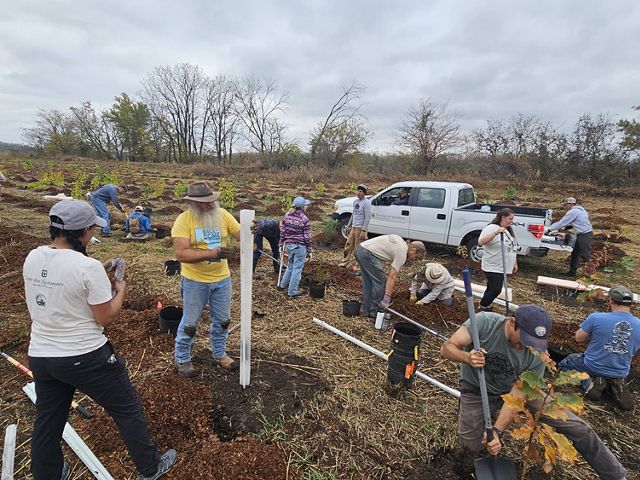
The site is one of three CCIs we have established in the state. Each is anchored at a different TNC preserve, providing unique opportunities tailored to the surrounding ecosystems and communities. The Ozarks Woodlands CCI in the Current Hills of southeastern Missouri offers access to the characteristic glades, fens and woodlands of the region, while the Grand River Grasslands CCI at Dunn Ranch Prairie attracts everyone from university researchers to school kids, eager to see bison on the prairie.
The CCIs are quickly becoming places where diverse agencies and audiences can interact with conservation practices in person—and then adapt them to their own needs, expanding their use. And the program is growing.
Prescribed Fire and Stewardship
TNC deployed four Habitat Strike Teams this year, a first for the new program. The teams are multi-skilled, agile crews that help manage Missouri grasslands, savannahs, woodlands and forests using a variety of tools, such as prescribed fire, invasive species removal and forest thinning.
Habitat Strike Team Regions
TNC has four Habitat Strike Teams in Missouri. The circles indicate where the teams assist with habitat management on private land. The teams expand beyond these ranges to assist conservation partners who are working on priority landscapes.
Map of Missouri’s Priority Geographies and Conservation Opportunity Areas collaboratively developed and maintained by the Missouri Department of Conservation.
Eastern Ozarks
The Eastern Ozarks region is home to numerous species found nowhere else on earth. This region is known for its many caves, springs and sinkholes, winding rivers and lush woodlands. TNC’s Habitat Strike Team collaborates with landowners and partners including the U.S. Forest Service to implement conservation measures that safeguard this critical habitat.
Primary habitat work: Woodland and glade management on public and private lands, using prescribed fire, timber understory treatments and invasive species treatments.
Species of concern:
Indiana bat
Hine’s emerald dragonfly
Ozark hellbender
Western Ozarks
The Western Ozarks region encompasses rolling hills, dense forests and clear streams and is known for its karst topography, featuring caves, sinkholes and underground rivers. TNC’s Habitat Strike Team works with private landowners and agencies to implement prescribed fire and treatments to keep invasive species at bay.
Primary Habitat Work: Woodland and glade management on public and private lands, using prescribed fire, timber understory treatments and invasive species treatments.
Species of concern:
Eastern hellbender
Bachman’s sparrow
Niangua darter
Osage Plains
The Osage Plains, located in the west-central part of Missouri, encompasses some of the most diverse native tallgrass prairies in the state and is extremely threatened by invasive species. TNC’s Habitat Strike Team works with private landowners and agencies to increase biodiversity supporting the plants and wildlife in the landscape.
Primary habitat work: Prairie management on public and private lands, using prescribed fire, invasive treatments, woody vegetation management and native seed harvest/planting.
Species of concern:
American burying beetle
Mead’s milkweed
Greater prairie-chicken
Grand River Grasslands
The Grand River Grasslands, spanning over 160,000 acres in Missouri and Iowa, is a critically endangered habitat. TNC's Habitat Strike Team collaborates with private landowners to focus on sustainable practices benefiting healthy prairies and working lands. They also collaborate with Drake University for grassland research and workforce development.
Primary Habitat Work: Prairie management on public and private lands, using prescribed fire, invasive treatments, woody vegetation management and native seed harvest/planting.
Species of concern:
Topeka shiner
Mead’s milkweed
Greater prairie-chicken
They are strategically positioned around the state in key landscapes where they can play an important role in conserving biodiverse habitats. But the Strike Teams are also built to move. They regularly work alongside conservation partners, such as the Missouri Department of Conservation, who depend on the extra hands to meet minimum burn crew sizes. By joining forces with other agencies, our teams can dramatically and safely increase controlled burns statewide in landscapes that evolved with fire.
As part of the Missouri Prescribed Burn Council, TNC was also a contributor to a newly released fire needs assessment website, a crucial step toward aligning efforts across the state. The assessment highlights how much more healthy fire Missouri needs. Capacity is one of the primary barriers. TNC is addressing that through multipliers, such as the Habit Strike Teams, but also coalition building and training. With partners, TNC hosted a Prescribed Fire Training Exchange in the Ozarks and a Fire Science Academy at Dunn Ranch Prairie that attracted fire practitioners from across the United States, Canada and Europe.
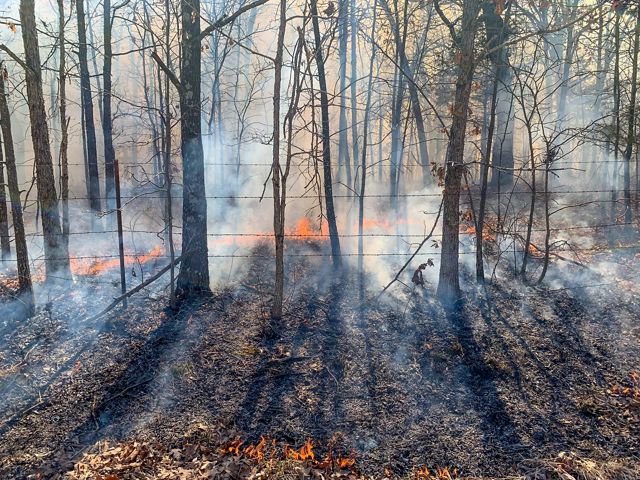
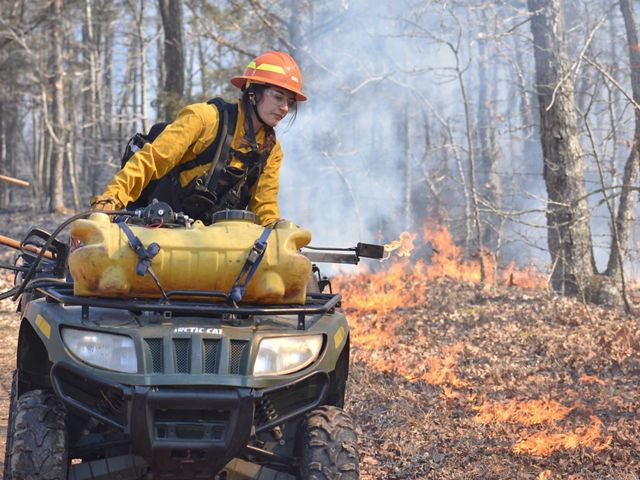
Buffalo Restoration Program
TNC first restored bison to Dunn Ranch Prairie more than a decade ago. Management of the herd has evolved over the years. Ongoing research has helped us better understand bison’s interplay with the prairie. TNC’s perspective has progressed as well, thanks to partnerships with Native-led organizations, such as the InterTribal Buffalo Council (ITBC) and Tanka Fund. Instead of viewing bison primarily as a tool of conservation for their ability to reshape the landscape, TNC has taken steps to learn from our partners about the American buffalo’s cultural, economic and spiritual place in the lives of Indigenous people. As part of the evolving relationship, TNC has helped support the work of ITBC, the Tanka Fund and others to rematriate buffalo to the Indigenous-operated lands.
Dunn Ranch Prairie is one of 11 preserves where TNC collectively manages more than 7,000 bison. Each year, those herds produce more animals than the land can support. Instead of selling the bison, TNC has begun to transfer them to Native communities. In 2024, ten bison were transferred from Dunn Ranch Prairie to sites in Texas through the Tanka Fund. Staff also hosted members of numerous Tribes for a cultural harvest, supporting a nearly weeklong gathering.
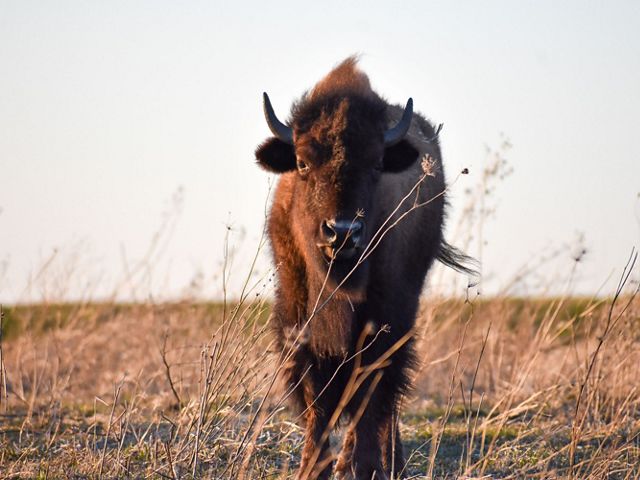
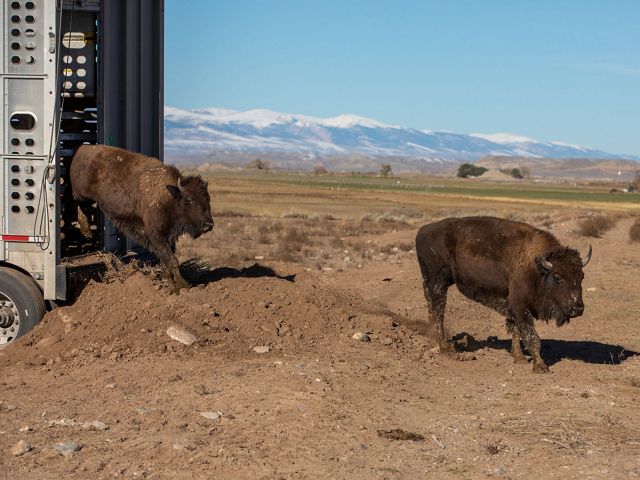
Land Protection
Throughout the past year, the land protection team’s ingenuity and dedication to tailored solutions have helped safeguard strategic portions of Missouri’s vital landscapes. Highlights include the purchase and planned transfer of 100 acres abutting a state-owned conservation area near the Lake of the Ozarks. The deal not only ensures permanent protection of habitat that shelters a diverse mix of species and preserves the prior owner’s intentions but also the maintains integrity of the adjoining conservation area, which is connected by a karst system and stream.
Often, TNC can bridge a gap in the conservation of these types of properties, acting quickly to prevent them from being destroyed through overdevelopment or the clear-cutting that frequently happens just before or after a sale. In July, TNC accepted an offer from U.S. Fish and Wildlife to buy 602 acres along Roubidoux Creek. The creek is a tributary to the Gasconade River, and the property includes a cave used by bats. TNC bought the property in 2022 and can now hand it off for long-term protection by the federal agency.


We also continue to use our Ozark Conservation Buyers Fund to buy property in the Current and Jacks Fork watersheds, protect the land with conservation easements and sell to new owners. Money from the sales goes back into the fund to continue the cycle and protect more of the biologically rich ecosystem.
In 2024, the fund allowed TNC to buy more than 700 acres in the Current’s watershed, adding to the more than 12,000 acres protected through the fund since its inception in 2007. The fund has been such a success, our team is preparing to launch a similar tool for protecting grasslands in the future.
Urban Waters Ambassador and the Meramec
In July, TNC hired Tom Stevens as the Meramec and Big Rivers Urban Waters Ambassador. The role fills a vital need in the Meramec watershed, which is a key tributary to the Mississippi River and boasts tremendous biodiversity. Among nearly 300 aquatic and aquatic-dependent species recorded in the basin are 31 species of global significance. Several are found nowhere else on Earth.
The Meramec also supplies drinking water to approximately 70,000 households in the St. Louis area. It’s long been on TNC’s list of priorities. Plenty of other organizations and agencies are invested, too, focusing on issues that range from water quality to flood mitigation. With so much going on, coordinating efforts is crucial.
That’s where the ambassador shines—as a convener of partner groups and neighbors as well as a guide through the reports and resources developed throughout the years. One of the position’s primary responsibilities is to act as a liaison between locals, NGOs and the many federal agencies working in the area.
The ambassador is part of the Urban Waters Federal Partnership. The program includes a network of 21 sites. It was designed to promote clean urban waters, encourage conservation, reconnect people to their waterways and coordinate federal agencies. It prioritizes communities that are overburdened or economically distressed.
The Meramec, Big and Bourbeuse watersheds are combined as one site under the partnership. Missouri also has a second site, focused on the Blue River. No other state has more than one site.
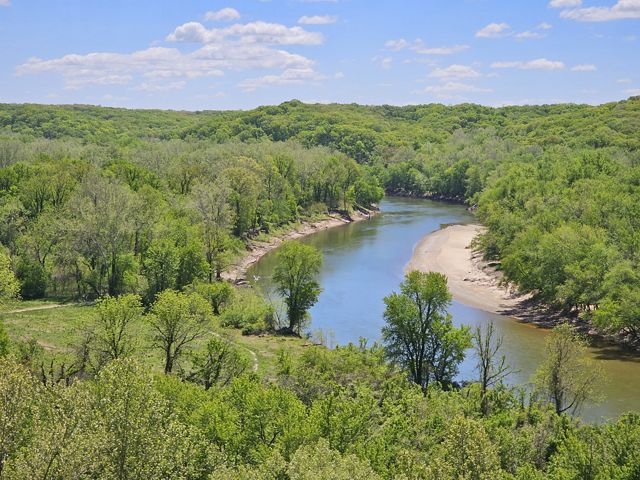


Sign up for Nature News
Get conservation stories, news and local opportunities from where you live.

